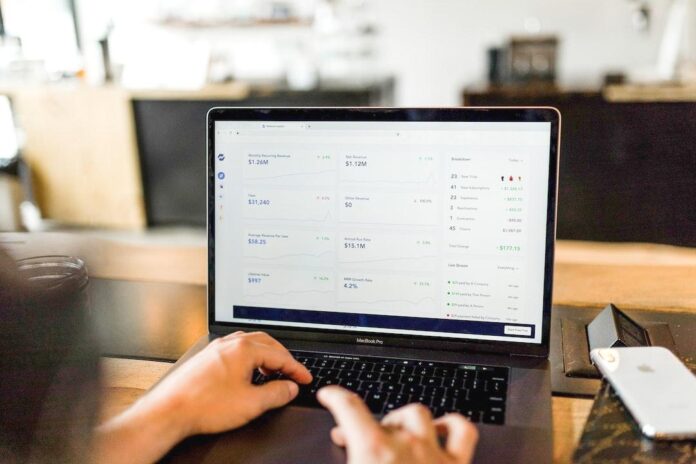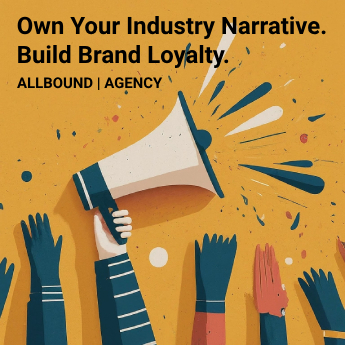If you’re looking to build a successful sales funnel for your business, you’ve come to the right place. This post will provide valuable insights and real-life examples to help you understand and optimize your sales process.
A sales funnel in real life is a strategic model representing the stages that potential customers go through during their purchasing journey, from the initial awareness of a company’s product or service to finalizing a transaction. Real-life examples of sales funnels can be found in various industries, adapting unique strategies to capture leads, nurture them, and convert them into sales.
Ready to dive deeper? Keep reading as we uncover the different stages of a sales funnel, how to define and optimize it, and how to manage it effectively using CRM software and other sales management tools.
What is a Sales Funnel?
A sales funnel is a strategic model representing the stages that potential customers go through during their purchasing journey. From initial awareness of a company’s product or service to finalizing a transaction, this model helps businesses understand their customers’ decision-making process and implement tailored marketing strategies to facilitate conversions. In simple terms, it captures potential customers’ attention, nurtures them with targeted messaging, and ultimately turns them into satisfied buyers.
.jpg)
Source: SendPulse
Stages of a Sales Funnel
The sales funnel typically consists of several stages, each representing a different phase of the customers’ decision-making process:
- Awareness: At the top of the funnel, prospects learn about a product or service. This stage is all about capturing their attention and piquing curiosity, often through advertising, social media, and other marketing efforts.
- Interest: Once prospects are aware of a solution, they may start exploring potential options. At this stage, they might provide their contact information, subscribe to email updates, or engage with your brand on social media.
- Evaluation: Prospects continue their research, comparing different offerings and considering alternatives. Tailored content such as comparison guides, case studies, and webinars can help sway their decision in your favor.
- Negotiation: After narrowing down their options to a few potential solutions, customers enter the negotiation stage, when they may discuss pricing, terms, and other details with sales representatives.
- Purchase: At the bottom of the funnel, the prospect makes a final decision and completes the transaction, becoming a customer.
Having all these stages in your sales funnel is essential to guide the customer throughout their journey, provide valuable insights into consumer behavior, and help identify areas for improvement.
Real-life Examples of Sales Funnels
Sales funnels are employed across various industries, tailoring strategies to guide potential customers through the buying process, from capturing leads with offers to nurturing and converting them into sales. Here are three real-life examples to illustrate the sales funnel concept:
E-commerce sales funnel
An e-commerce business may use a sales funnel to drive online sales. In the awareness stage, they might leverage social media ads, influencer partnerships, and SEO strategies to attract potential customers. As prospects move to the interest stage, the company may offer incentives such as discount codes or limited-time offers to persuade them to subscribe to their email list. Through personalized email campaigns, prospects are nurtured and led to browse the company’s products, ultimately leading to a successful purchase.
SaaS sales funnel
A software-as-a-service (SaaS) company could utilize a sales funnel to acquire new customers. Potential leads discover the product via online ads, blog articles, or industry events. In the interest stage, they could be drawn to sign up for a free trial, demo, or informative webinar. An efficient onboarding process and nurturing emails help guide the prospect through the evaluation phase, while sales representatives reach out to address any concerns and close the deal, securing a subscription.
Education and training sales funnel
A company providing education and training services might use a sales funnel to attract potential students. In the awareness stage, they might rely on targeted advertising, partnerships with educational institutions, or content marketing. Once prospects express interest, they may offer free resources, workshops, or consultation calls to showcase the value of their courses. Throughout the evaluation process, prospects receive personalized communication, addressing individual needs and guiding them towards enrollment.
The Value of a Sales Funnel
A well-structured sales funnel offers several benefits to businesses, enabling them to:
- Understand customer behavior: By mapping the customer journey through various stages, businesses can gain insights into their prospects’ decision-making process, preferences, and pain points.
- Identify opportunities for improvement: A sales funnel helps businesses spot areas where they may be losing prospects, allowing them to evaluate and refine their strategies to optimize conversion rates.
- Create targeted marketing strategies: By understanding the needs and preferences of prospects at different stages of the funnel, businesses can develop tailored messaging and tactics that resonate with their target audience, enhancing engagement and conversions.
- Forecast sales and set goals: By closely monitoring funnel metrics, businesses can predict sales and assess the effectiveness of their marketing and sales efforts, allowing them to set and track realistic objectives.
A sales funnel is an essential tool for any business looking to understand their customers, streamline sales processes, and maximize conversions. By identifying the different stages of the customer journey and tailoring marketing strategies to suit each phase, it’s possible to create an efficient, optimized, and highly effective sales process.
How to Define Your Sales Funnel
Defining a sales funnel for your business involves understanding your audience’s purchasing process and identifying the sales stages that coincide with their decision-making journey. Each stage of the funnel typically corresponds to various marketing activities and touchpoints, helping businesses tailor messages and tactics for each phase. Personalizing communication and offers can greatly improve the conversion rate and optimize the overall customer experience.
To start defining your sales funnel, follow these steps:
- Identify your target audience: Understand who your ideal customers are, their needs, and what attracts them to your product or service. Create customer personas to guide your marketing activities and messaging.
- Map the customer journey: Outline the steps a potential customer takes from their first interaction with your brand until they complete a purchase. Include all potential touchpoints, such as social media interactions, website visits, and email correspondence.
- Determine the funnel stages: Analyze your mapped customer journey and break it down into distinct stages that mirror the sales funnel. Examples include Awareness, Interest, Evaluation, and Purchase, but the stages can vary depending on your specific business and industry.
- Define key metrics and goals: Set measurable objectives, conversion rates, and other key performance indicators (KPIs) for each stage of the funnel to track performance and success over time. Establishing clear goals keeps your sales and marketing teams aligned and focused on achieving consistent results.
Fixing a Sales Funnel That’s Losing Leads
If your sales funnel is not performing as expected, it’s essential to identify potential flaws and implement strategies to fix them. Common issues include long lead response times, inadequate or untargeted marketing, and inefficiencies in your sales process. To remedy these problems:
- Analyze data: Use analytics and reporting tools to examine the performance of each funnel stage and identify apparent bottlenecks, leakages, or drop-off points.
- Optimize lead engagement: Enhance the quality and relevance of marketing materials and messaging, ensuring they’re tailored to your target audience and tailored for each funnel stage.
- Increase lead follow-up: Implement efficient lead management practices, such as immediate response times, lead scoring, and nurturing campaigns to keep prospects engaged and moving towards a purchase.
- Simplify the sales process: Minimize friction during the buying process by refining your sales pitch, offering flexible pricing options, and addressing common customer concerns.
- Evaluate results and iterate: Continuously monitor, test, and refine your strategies to improve sales funnel efficiency and reduce lost leads.
Managing Your Sales Funnel Daily
A robust CRM software can help streamline daily sales management tasks, providing valuable insights into your sales funnel’s health and performance. CRM tools allow you and your sales team to track lead activities, manage contacts, and monitor sales metrics effectively.
Key benefits of using a CRM system for managing your sales funnel daily include:
- Enhanced lead tracking, contact management, and follow-up capabilities.
- Access to real-time insights, analytics, and reporting, which helps to identify bottlenecks and improve decision-making.
- Improved collaboration, with sales and marketing teams aligned around common goals and KPIs.
- Simplified forecasting, allowing you to assess potential revenues and allocate resources more accurately.
- A centralized platform streamlining customer interactions, ensuring personalized communication and a smoother buying experience.
How Sales Funnels Work
An effective sales funnel strategically guides potential customers through various stages of awareness, interest, and decision-making by using targeted content, timely communication, and personalized offers. It fosters a deep understanding of your target audience and their needs, while consistently nurturing prospects towards a purchase.
Each stage of the sales funnel is designed to address different customer objectives and concerns, using tactics such as:
- Capturing attention and generating interest through well-crafted marketing campaigns and high-quality content.
- Nurturing leads with personalized email sequences, relevant offers, and engaging communication.
- Addressing doubts or objections by providing social proof, customer testimonials, and detailed product information.
- Facilitating the buying process by offering incentives, streamlined purchase options, and efficient customer support.
How to Optimize a Sales Funnel
To optimize your sales funnel and increase conversions, follow these best practices:
- Understand your target audience: Create buyer personas and segment your customer base to develop personalized content and communication strategies tailored to their specific needs and preferences.
- Automate lead nurturing: Utilize marketing automation tools to send targeted email sequences, share personalized offers, and maintain consistent communication with prospects throughout the funnel stages.
- Test and refine: Continuously conduct A/B testing to identify the most effective conversion paths and optimize your marketing strategies accordingly.
- Enhance user experience: Streamline your website’s navigation, simplify the checkout process, and provide clear calls-to-action (CTAs) to facilitate a smooth buyer’s journey.
- Monitor and analyze: Regularly review your sales funnel performance, track KPIs, and use data-driven insights to inform decision-making and refine your strategies.
Frequently Asked Questions
What are the key stages in a sales funnel?
The key stages of a sales funnel typically include Awareness, Interest, Evaluation, Negotiation, and Purchase. However, these stages can vary depending on your specific business and industry.
Why is it important to segment target audiences when optimizing a sales funnel?
Segmenting your target audience enables you to create tailored marketing content, personalized messaging, and targeted offers that resonate with your customers’ needs and preferences. This leads to higher engagement and improved conversion rates.
Can a CRM system help improve my sales funnel?
Yes, using a CRM system for daily sales management can streamline lead tracking, provide valuable sales metrics, and improve customer communication, ultimately leading to optimized sales funnel performance.
What is the role of A/B testing in optimizing a sales funnel?
Conducting A/B testing allows you to compare different marketing strategies, conversion paths, or webpage elements and identify those that perform best. This data-driven approach can help optimize your sales funnel by enhancing user experience, increasing conversion rates, and improving overall marketing effectiveness.
How can I speed up the sales process within my funnel?
You can speed up the sales process by simplifying communication, offering flexible pricing options, providing detailed product information, and proactively addressing common customer concerns. Additionally, optimize the checkout process, offer incentives, and ensure efficient customer support to facilitate smooth transactions.

